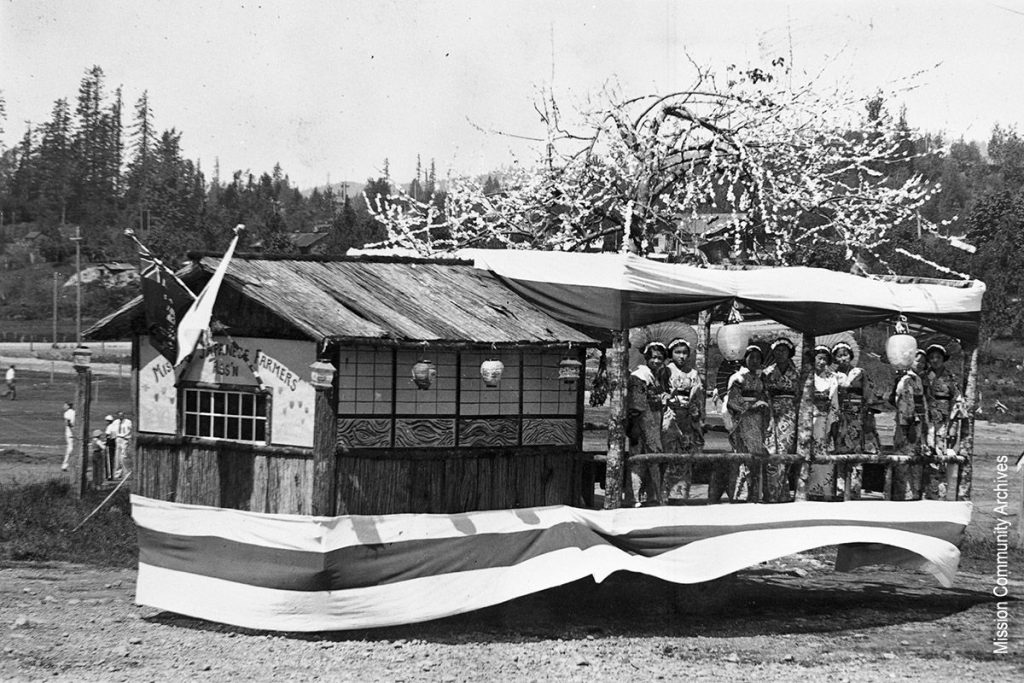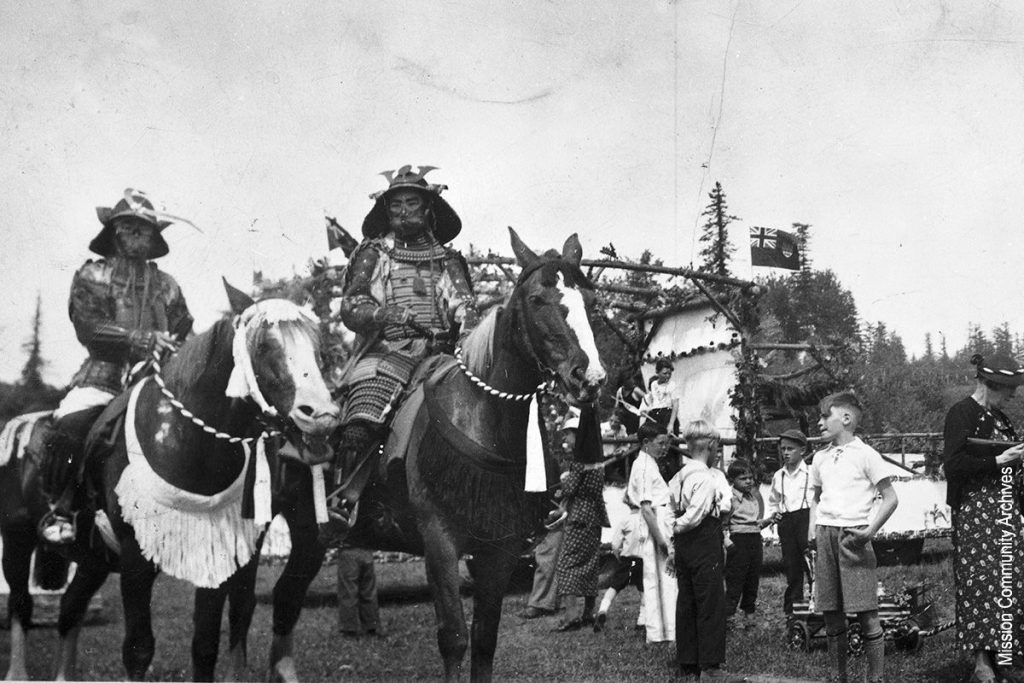
Nohkai May Day float on Mission parade grounds, 1938. This was the Japanese Canadian’s way of contributing to the white society and trying to fit in.
The Mission Nohkai was connected to the Nohkai of Haney, Hammond and Whonnock through the Federation of Nohkais and met with them on a regular basis. The purpose of this communication was to collaborate on topics of mutual interest. Banquets were often held, where the host Nohkai would share important farming information with representatives from neighboring Nohkais.
In December of 1920 a meeting of the Federation of Nohkais was hosted by Hammond. Mission was represented by Kumekichi Fujino, Teizo Hashizume and S. Uyeda. At this meeting several business issues were discussed and resolved. However, the issue that they were concerned the most with was that some women were being subjected to harsh working conditions. They agreed that the conditions should be corrected, as it would have a bad influence on the hakujin (white) community. Also, not enough attention was being paid to the sanitary conditions in the community. This was remedied to gain favor with their white neighbors.
In May of 1921, a special meeting of the Federation was held in Hammond. Kumekichi Fujino, Minoru Kudo, and Susumu Uyeda were present from the Mission Nokhai, in order to survey the farmers to address the anti-Japanese movement that was prevalent in the area. *(See Racism in British Columbia)
They had many meetings following these ones, in which they continued to discuss, and address:
• farming practices
• cooperation on marketing
• selection and treatment of yobiyose (laborers called over from Japan to work on their farms)
• resting on Sundays (for the white community)
• growing and marketing of hothouse rhubarb
• as well as other problems of mutual interest

A joining of cultures or a clashing of worlds? White male children look upon Japanese community members dressed as samurai in a May Day parade (c.1930-1941).